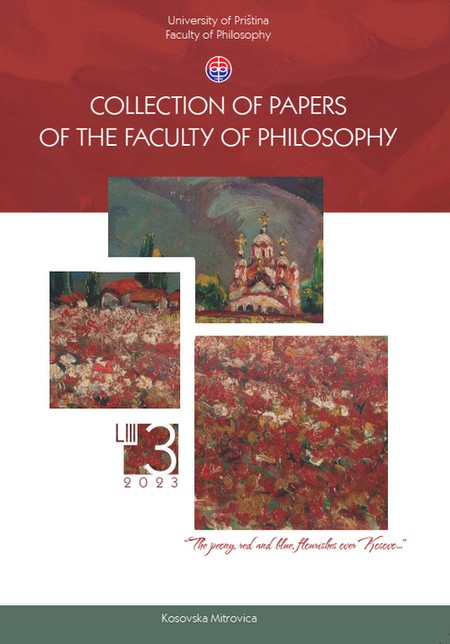“There’s going to be a moon tonight”: Images of Light and Darkness as Symbolic Elements in Ernest Hemingway’s In Our Time
“There’s going to be a moon tonight”: Images of Light and Darkness as Symbolic Elements in Ernest Hemingway’s In Our Time
Author(s): Milica B. Surla, Vladislava Gordić PetkovićSubject(s): American Literature
Published by: Филозофски факултет, Универзитет у Приштини
Keywords: light; darkness; symbolization; birth; death; fear; consolation.
Summary/Abstract: This paper aims at exploring and analysing the presence and significance of images of light and darkness as symbolic elements in the short story collection In Our Time by Ernest Hemingway. Many renowned writers incorporate such images into their works, often representing them as distinct polarities or as a unified entity. Given the fact that Hemingway’s often omitted elements of the narrative are prone to analysis due to their significance, the main aim of this paper would be to examine what these symbolic elements might be an indication of. By relying on the theory of conceptual metaphor and Jung’s coniunctio oppositorum, or the union of opposites, abstract oppositions such as emotions surrounding birth and death, fear and consolation, the fundamental misunderstanding between various married or unmarried couples within these short stories will be analysed within the mentioned framework. Thus, the paper provides an exploration of these notions and sheds light on Hemingway’s portrayal of the stereotypical dark/light opposition, as well as the coexistence of these opposing elements within the inner and outer worlds of his characters. Hence, the main conclusions which can be drawn from the analysis include the perspective from which the author creates images of light and darkness in order to draw attention to emotions such as fear or consolation corresponding to the common perception of these images. Nonetheless, depending on the context within different narratives, the author also manipulates the common perception, thus creating the reverse symbolisation. By presenting both of these images, examining their contrast, relatedness, as well as the necessity of their existence, Ernest Hemingway creates a unique short story collection, thus supporting the claim that his narratives can be repeatedly and inexhaustibly reread and reanalysed.
Journal: Зборник радова Филозофског факултета у Приштини
- Issue Year: 53/2023
- Issue No: 3
- Page Range: 57-72
- Page Count: 15
- Language: English

